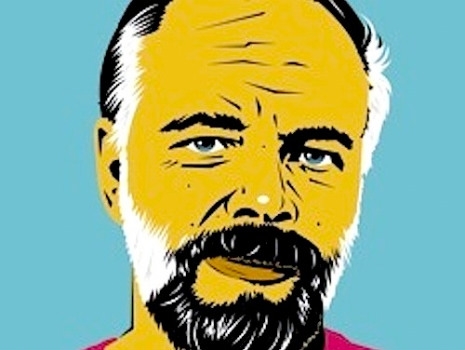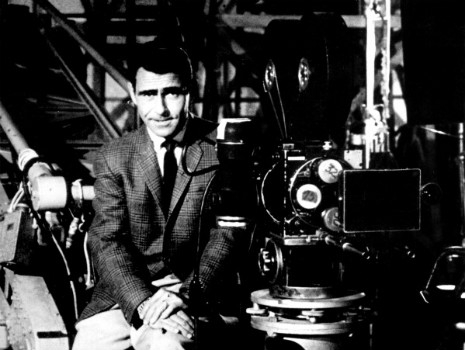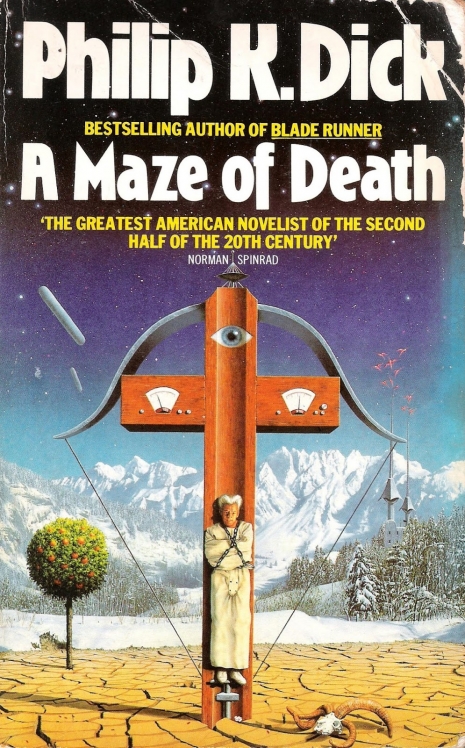
‘The cross took the form of a crossbow, with Christ as the arrow…’
The interview with Philip K. Dick embedded below, recorded in Santa Ana on May 17, 1979, touches on many of the author’s experiences and obsessions—the combat his father saw in World War I, how he came to join the Episcopal Church (“My wife said if I didn’t, she’d bust my nose”), the dying rat who shook his faith, the coming of Pierre Teilhard de Chardin’s Omega Point, contemporary attitudes towards homosexuality, compulsory ROTC at the University of California, the time he got pancreatitis from using “bad street dope” cut with film developer, the constant threat posed by authoritarian movements—but I’ve cued it up to this vivid description of a bad, bad trip he had in 1964:
I only know of one time where I really took acid. That was Sandoz acid, a giant horse capsule that I got from the University of California, and a friend and I split it. And I don’t know, there must’ve been a whole milligram of it there. It was a gigantic thing, you know, we bought it for five dollars and took it home and we looked at it for a while—looked at it, we were all gonna split it up—and took that, and it was the greatest thing, I’ll tell you.
I went straight to Hell, is what happened. I found myself, you know, the landscape froze over, and there were huge boulders, and there was a deep thrumming, and it was the Day of Wrath, and God was judging me as a sinner, and this lasted for thousands of years and didn’t get any better. It just got worse and worse, and I was in terrible pain, I felt terrible physical pain, and all I could talk was in Latin. Most embarrassing, ‘cause the girl I was with thought I was doing it to annoy her, and I kept saying Libera me domine in die illa. You know, and Agnus dei qui tollis peccata mundi [...] and especially, Tremens factus sum ego et timeo—timeo meaning “I’m afraid”—and I said Libera me, domine! Whining like some poor dog that’s been left out in the rain all night. Finally, the girl with me said “Oh, barf” and walked out of the room in disgust.
It was a little bit like when I rolled my VW. I mean, it was all very messy and strange. The only good part of it was when I looked in the refrigerator, and I hadn’t defrosted the refrigerator for a long time, and there was nothing in the freezer compartment. I looked in, and I saw this giant cavern with stalactites and stalagmites, and I thought it was the most beautiful thing I’d ever seen. Ashtray, with cigarette butts in it? Most horrible smell I’d ever smelled! But music sounded very beautiful.
About a month later, I got the galleys for Three Stigmata to read over, and I started reading the galleys, and I thought, “Oh dear, I can’t read these galleys. They’re too scary.” Because all the horrible things that I had written about in Three Stigmata seemed to have come true under acid. So I used to warn people then, that was ‘64, and I used to warn people against taking it. I begged people not to take it.
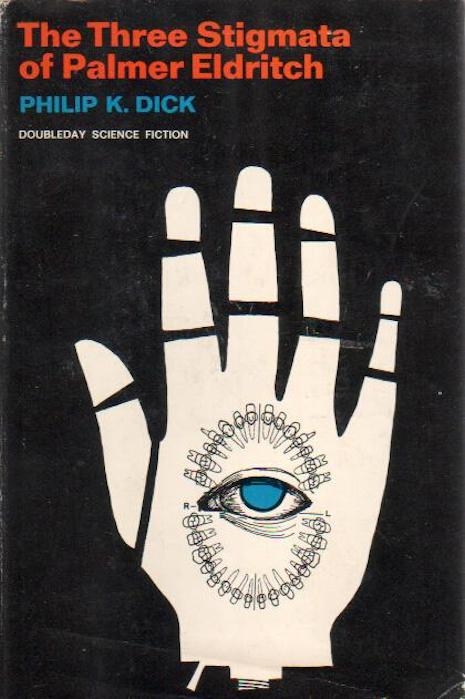
Dick put one of the characters in A Maze of Death through the same religious bummer, and he wrote about the ways the psychedelic experience resembled mental illness in two mid-sixties essays, “Drugs, Hallucinations, and the Quest for Reality” and “Schizophrenia & The Book of Changes.” The latter includes a passing reference to the eternity he spent in Hell one night:
Yes, friends, you, too, can suffer forever; simply take 150 mg [sic] of LSD—and enjoy! If not satisfied, simply mail in—but enough. Because after two thousand years under LSD, participating in the Day of Judgment, one probably will be rather apathetic to asking for one’s five dollars back.
Biographer Lawrence Sutin reports the eyewitness account of Dick’s friend Ray Nelson, who remembers the author “sweating, feeling isolated, reliving the life of a Roman gladiator, speaking in Latin and experiencing a spear thrust through his body.” Sutin also quotes this portion of a 1967 letter Dick wrote to Rich Brown, which discloses a few more details of the acid vision of God:
I perceived Him as a pulsing, furious, throbbing mass of vengeance-seeking authority, demanding an audit (like a sort of metaphysical IRS agent). Fortunately I was able to utter the right words [the “Libera me, Domine” quoted above], and hence got through it. I also saw Christ rise to heaven from the cross, and that was very interesting, too (the cross took the form of a crossbow, with Christ as the arrow; the crossbow launched him at terrific velocity—it happened very fast, once he had been placed in position).
Listen to what the man says, after the jump…







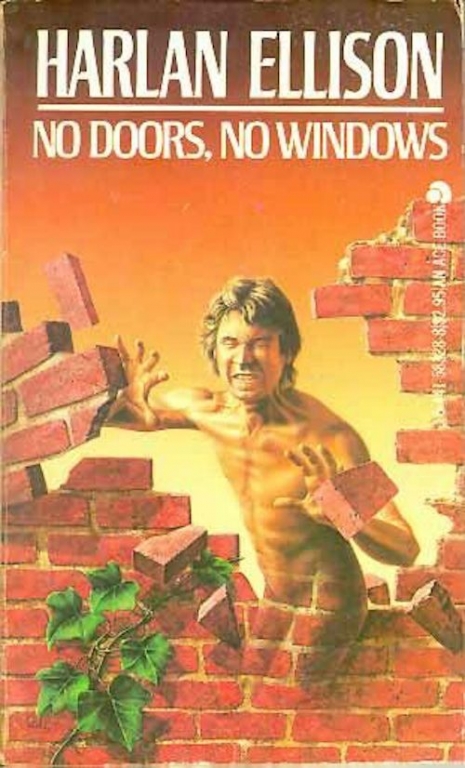


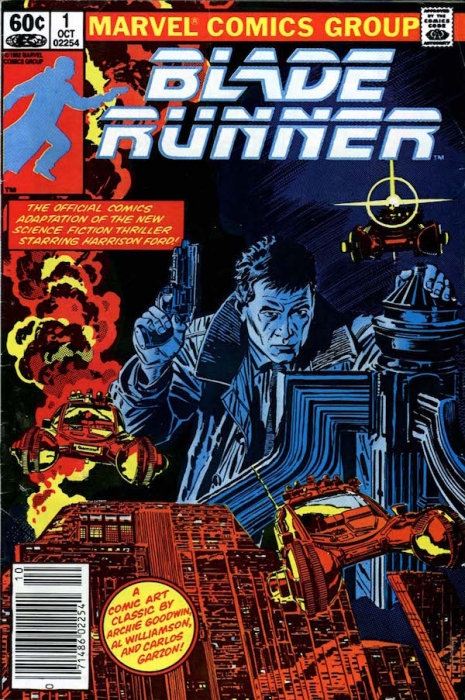
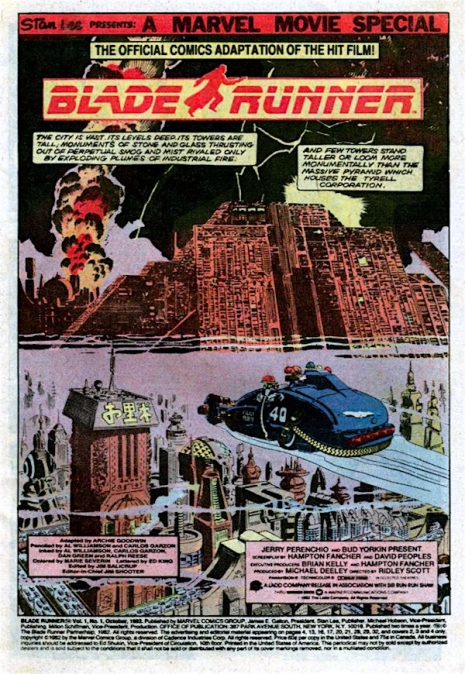
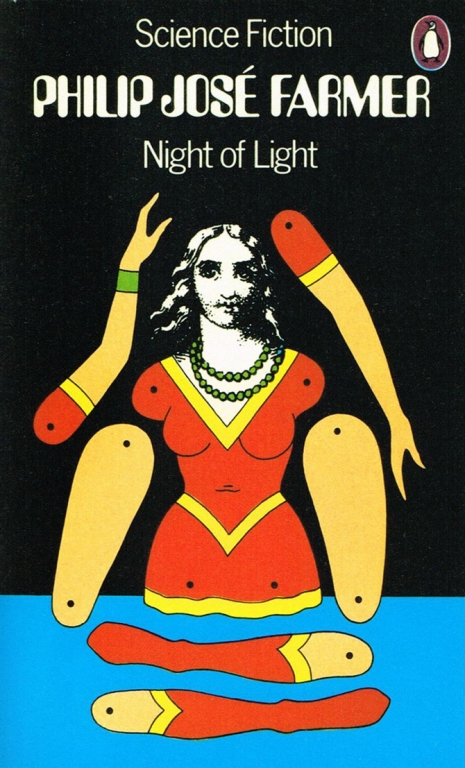
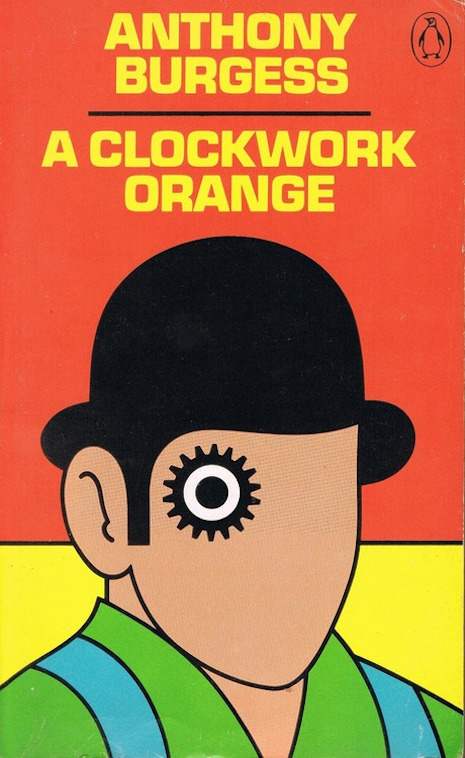
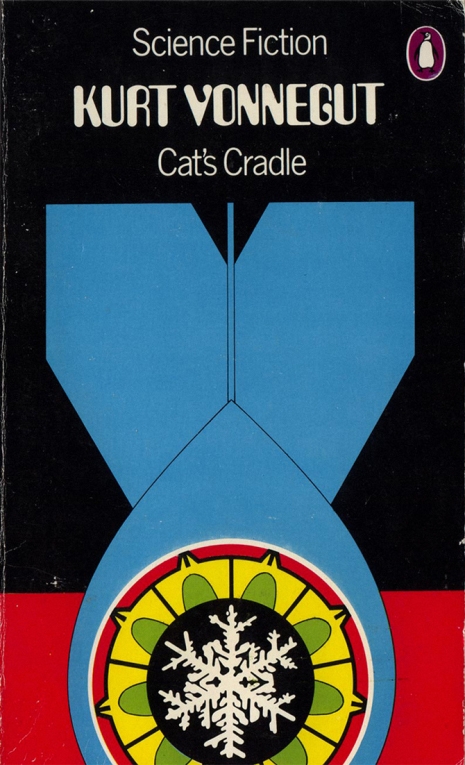




_465_755_int.jpg)











